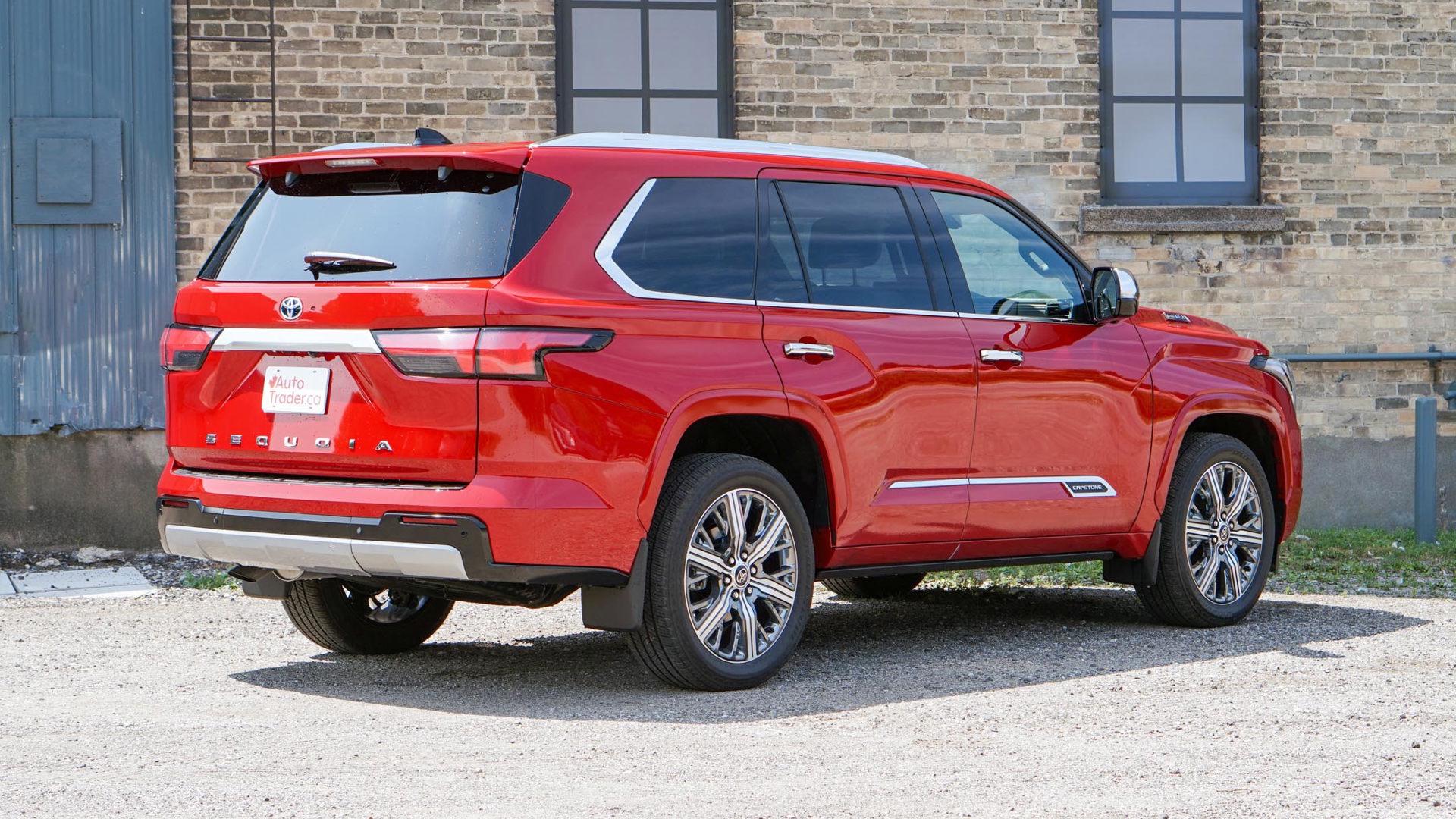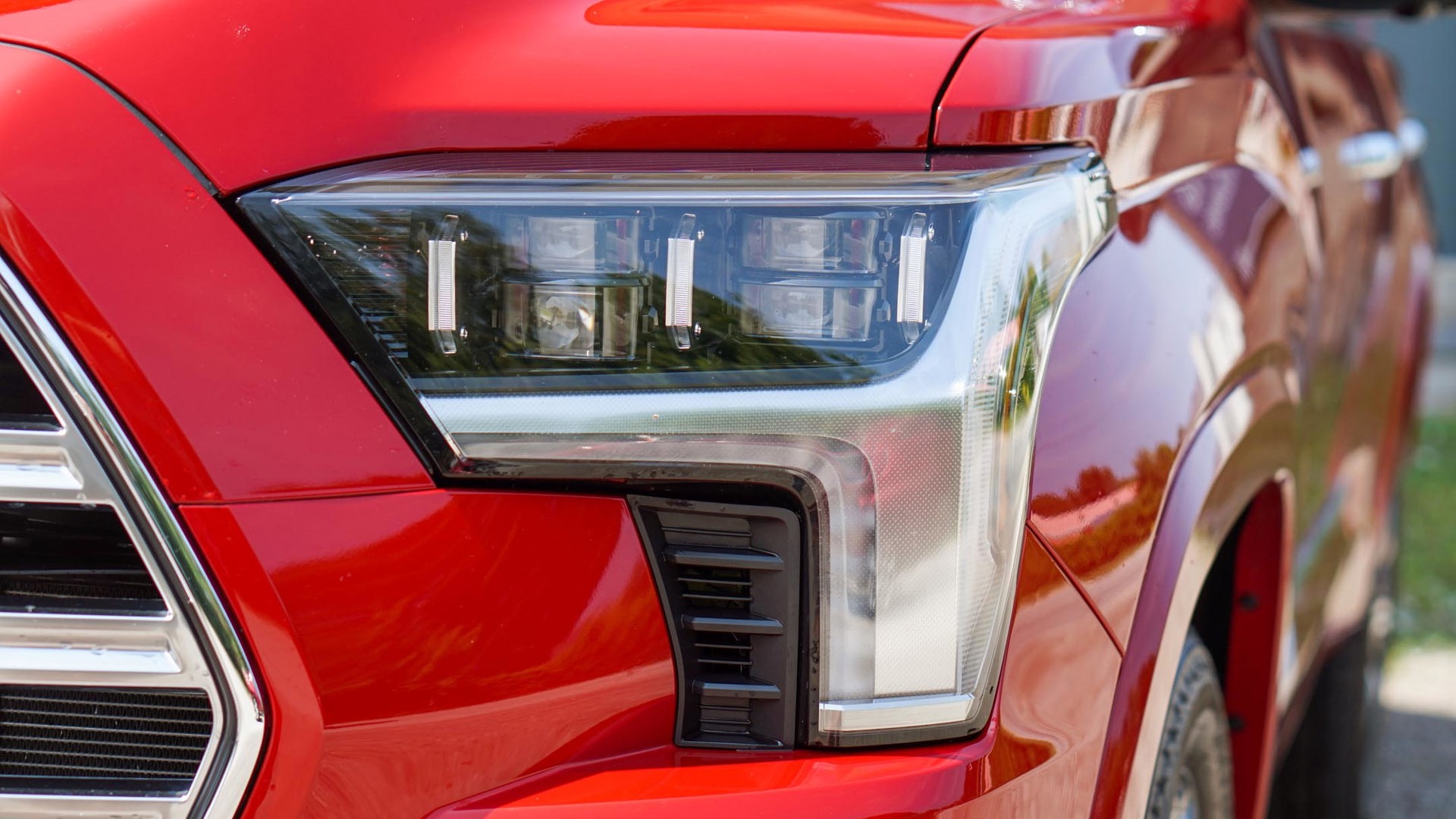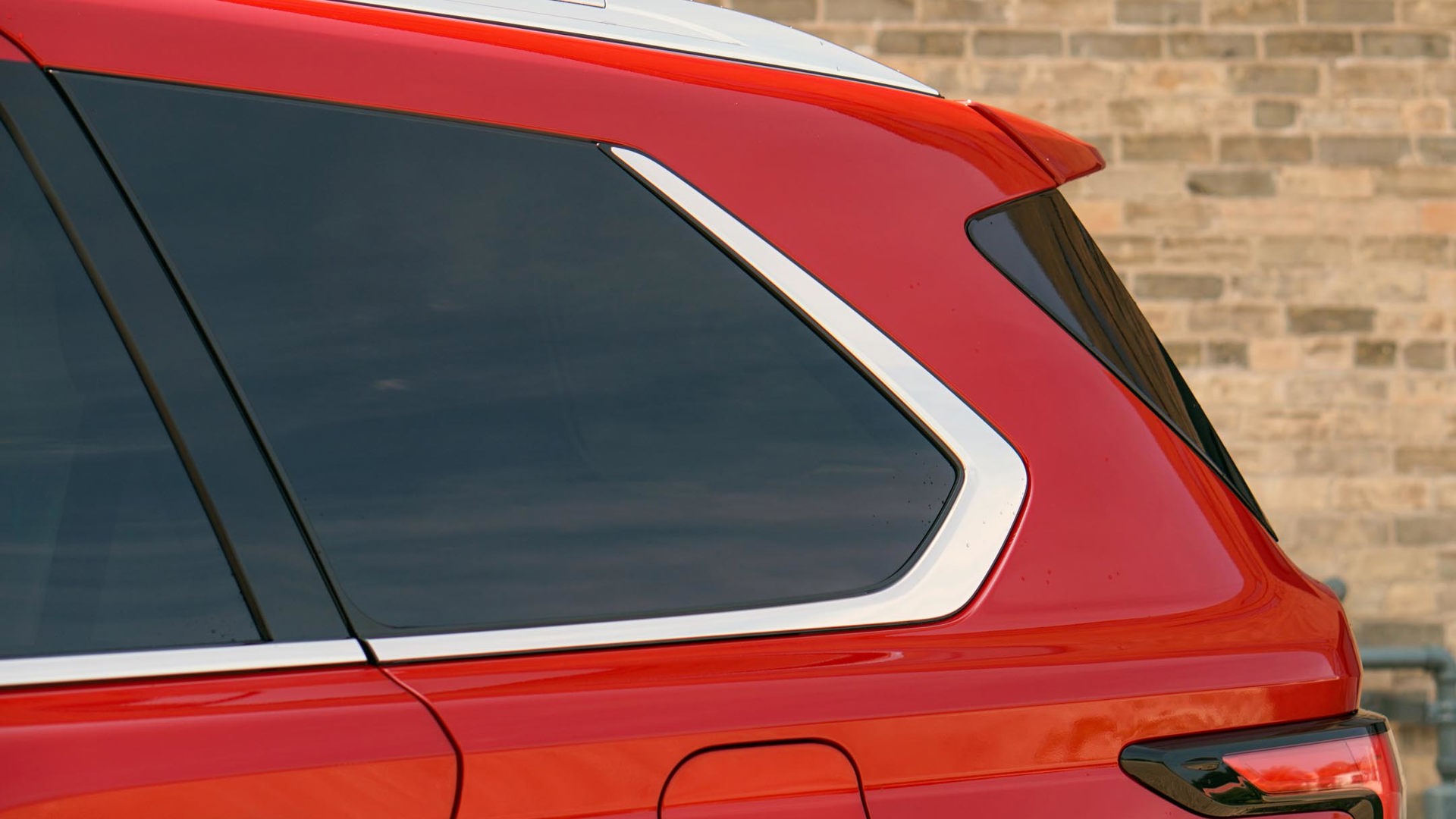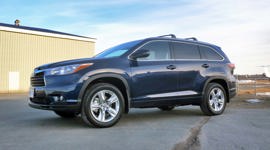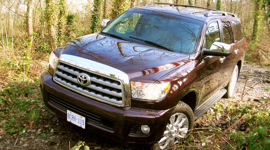 AutoTrader SCORE
AutoTrader SCORE
-
STYLING8/10
-
Safety9/10
-
PRACTICALITY8/10
-
USER-FRIENDLINESS8/10
-
FEATURES9/10
-
POWER8/10
-
COMFORT8/10
-
DRIVING FEEL7/10
-
FUEL ECONOMY6/10
-
VALUE7/10
The Toyota Sequoia spent an eternity on the market with minimal changes, but this truck-based SUV got a total overhaul for its third generation that modernized it without losing the old-school charm and capability it’s known for.
During an annual cottage trip to a quaint beach town near Port Elgin, Ont., we affectionately named the 2023 Toyota Sequoia “Brutus Biggums,” because it perfectly encapsulates what it’s all about.
Styling: 8/10
Just one look at the Sequoia is all it takes for the Biggums name to make sense. Dwarfing most other vehicles on the road, the Sequoia’s massive size is one of its defining attributes. It was too tall to fit inside my parking garage, but its imposing silhouette gives it tons of road presence. The Sequoia makes its purpose obvious with its enormous grille, upright and boxy stance, and chunky details.
Inside, the Capstone trim tested here verges on luxury-brand territory with matte wood trim, two-tone leather, and convincing faux aluminum trim.
Power: 8/10
The Brutus part of the name comes from the Sequoia’s beefy powertrain that enables immense, brute-like capability. New for 2023, the Sequoia has ditched the V8 for a twin-turbocharged 3.5L V6 hybrid powertrain. Total system output is 437 hp and 583 lb-ft of torque, both increases over the previous generation’s eight-cylinder.
Of course, four-wheel drive is standard in Canada, and the Sequoia’s transmission has been upgraded to a 10-speed automatic. Power delivery is strong and smooth, and there’s ample shove to get Biggums moving in a hurry so that passing or getting up to highway speeds is quick and seamless.
Driving Feel: 7/10
The Sequoia is one of only a handful of SUVs still built on a truck platform, and while it enables truck-like capability, it also comes with the downside of truck-like driving dynamics. The Sequoia has a big, truck-like turning radius, its rear end feels unsettled and bouncy over rough roads, and it can feel unwieldy in tight spaces or through corners.
There’s a lot of body movement when driven through winding roads, and it requires a good amount of braking distance to bring the big SUV to a stop. These are all typical attributes for trucks, but just a warning to drivers who might not be used to this type of behaviour from an SUV. Luckily, the Sequoia has great visibility and excellent top-down camera views when parking, making it easier to manoeuvre.
Fuel Economy: 6/10
The other downside of the Sequoia’s size and platform is its thirst for fuel. It’s officially rated at 12.6 L/100 km in the city, 10.5 on the highway, and 11.7 combined. Over 1,000 km of testing on mostly country back roads and highways, it returned an average of 12.8 L/100 km. I expected much better, especially because I was driving predominantly at highway speeds, without four-wheel drive activated, and wasn’t towing. The fuel economy is still much improved over the previous-generation model, but this hybrid powertrain is all about power rather than efficiency, and it shows.
Comfort: 8/10
The Sequoia is easy to enter and exit despite its height, thanks to automatically deploying side steps and chunky grab handles inside. The seats themselves are supportive, even during long trips. The Platinum trim also adds heated and ventilated front and second-row seats.
The third row is usable for a 5-foot-7 adult of my size, and sunshades are offered back there.
The third row slides forward and backward to make more room for passengers or cargo. The biggest issue affecting comfort is all the bouncing over rough roads.
Practicality: 8/10
The Sequoia’s practicality is one of its highlights. With tons of cup holders and storage cubbies inside, finding a place to put everything is easy. The centre console is huge and even has dedicated slots to store change, there are USB charging ports for almost every occupant, and the doors have pockets large enough for water bottles. There are 120-volt household outlets in both the second row and in the trunk that should be handy for camping or road trips.
I also love that the rear glass opens independently from the rest of the tailgate, which makes it easy to access cargo without the risk of anything tumbling out. The only issue is that the Sequoia is so tall that it still requires a bit of effort to reach whatever’s in there. There’s also a kick sensor for the hands-free tailgate, but it never seemed to work when I needed it.
The biggest issue with the Sequoia’s practicality is that the seats don’t fold to make a flat load floor. The multiple levels are an added annoyance when playing Tetris to load up the trunk for a week away. The SUV holds 326 L of cargo behind the third row, which isn’t a lot, 1,388 L behind the second row, and a large 2,461 L with both rows stowed. It’s rated to tow 4,082 kg (9,000 lb).
User Friendliness: 8/10
Getting into the third row is a simple process that a kid can manage independently. The second-row captain’s chairs fold and tumble easily in one motion using a lever on the side of the seat or a fabric strap from the third row. There are buttons in the trunk and near the doors for folding the third row electronically, but the second row must be stowed manually.
The Sequoia’s giant touchscreen is a highlight of the interior, and all the physical controls are intuitive and chunky enough to be used while wearing gloves. Most functions are easy to find, and navigating the system’s menus is easy. Wireless Android Auto and Apple CarPlay make great use of all the screen surface, though I wish smartphone mirroring was better integrated into the rest of the Sequoia’s features. For example, I wish Google Maps navigation instructions could be shown in the digital instrument cluster or the head-up display so drivers wouldn’t need to use the touchscreen to toggle between screens so often.
Because the infotainment system lacks specific shortcuts for commonly used functions like audio or navigation and is missing a home button, it can be a bit distracting to toggle between functions while driving (when I’m using Google Maps but want to change the radio station, for example, it takes at least four taps on the touchscreen to do so).
Features: 9/10
As the top trim available, the Sequoia Capstone comes with all the expected features, especially for towing. A trailer backup guide, tow package with heavy-duty hitch receiver, trailer brake controller, and two towing drive modes are included.
Safety: 9/10
The Sequoia comes standard with a long list of safety and driver assistance features that includes automatic emergency braking, blind-spot monitoring with rear-cross traffic alert, automatic high-beam control, lane tracing assist, left turn junction assist, right and left turn pedestrian and cyclist detection, adaptive cruise control, emergency steering and braking assist, and more.
I like how these features work together in the Sequoia, mainly because they aren’t as overly sensitive as other Toyota systems, where they send aggressive warnings even when there’s no real threat of danger. The adaptive cruise control feels natural and well-calibrated, the safety sensors are accurate, and they all work as they should.
Value: 7/10
The Sequoia got a considerable price bump along with its overhaul. While it’s easy these days to see half-ton trucks eclipse the six-figure mark, it was still shocking to see the as-tested price of the Sequoia creep that high. While its starting price of $89,050 is quite a bit higher than the Chevrolet Tahoe and the Ford Expedition, both those SUVs can easily cost over $100,000 before taxes, which would be difficult to do with the Sequoia.
The Verdict
The 2023 Toyota Sequoia only makes sense for drivers who will use it for what it was built for: towing and hauling. It would be overkill to use this burly SUV for simple commuting, and the compromises made to enable its capability are a lot to deal with if you’re not putting them to good use. If you’re looking for a roomy three-row SUV from Toyota, the new Grand Highlander should do the trick, and most models are much more affordable and still capable of towing up to 2,268 kg (5,000 lb).
If you’re looking for a three-row SUV that’s capable of towing, the Sequoia remains entirely competent, practical and family friendly, and impresses with its long list of standard safety features.
| Engine Displacement | 3.5L |
|---|---|
| Engine Cylinders | Twin-turbo V6 hybrid |
| Peak Horsepower | 437 hp net |
| Peak Torque | 583 lb-ft net |
| Fuel Economy | 12.6 / 10.5 / 11.7 L/100 km cty/hwy/cmb |
| Cargo Space | 326 / 1,388 / 2,461 L behind 3rd/2nd/1st row |
| Model Tested | 2023 Toyota Sequoia Platinum |
| Base Price | $89,050 |
| A/C Tax | $100 |
| Destination Fee | $1,930 |
| Price as Tested | $94,335 |
|
Optional Equipment
$3,255 – Capstone Package, $3,255
|
|













